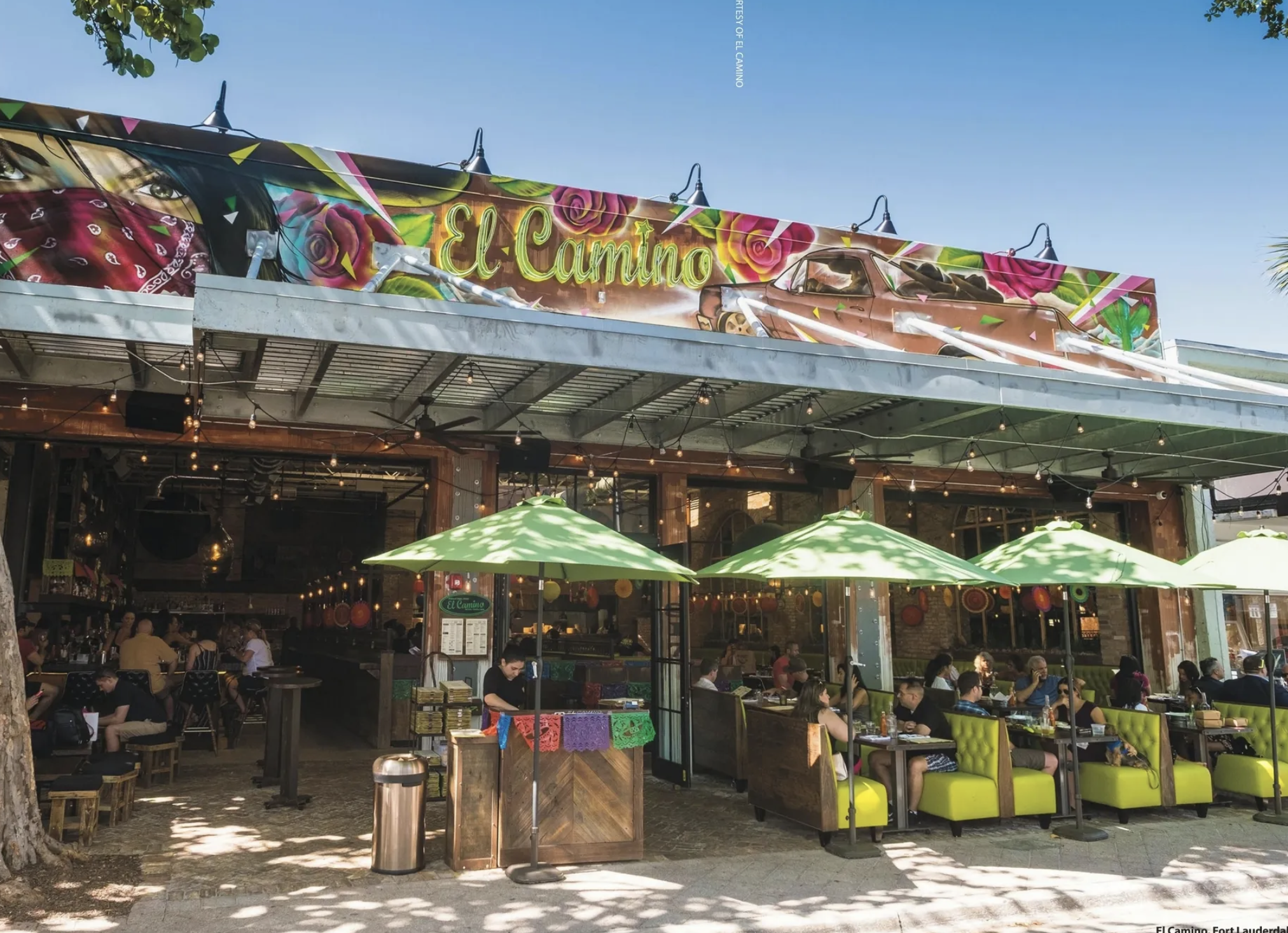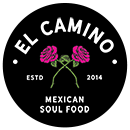
07 Apr You Know That You’re There’
At El Camino restaurants, a bold design of authentic and high-end touches harmonizes with Mexicaninspired murals and a bar-driven energy to concoct an unmistakable atmosphere
El Camino Mexican restaurant stands out on somewhat staid Las Olas Boulevard like a red chili pepper in a bowl of oatmeal. With its flamboyant exterior mural and its bold interior design, you can almost hear the place shouting, “Hey, there’s a fiesta going on in here.”
Opened in 2018, the restaurant and mezcal and tequila bar has two similarly spicy sister locations in Palm Beach County and a third on the way. The Delray Beach-based Modern Restaurant Group launched the inaugural iteration of the brand in that city in 2014 and a larger location in West Palm Beach last summer. An even more spacious spot is set to open in the burgeoning Restaurant Row in Boca Raton in the fall.
All the El Caminos share the same balance of authentic and high-end design elements and a floor plan that feeds off the energy pulsating from the bar.
“Definitely the tie-in is the bar component and the design,” says Brandon Belluscio, co-owner of the Modern group with Brian Albe and Anthony Pizzo. “The natural elements, the brick work, the tufted booths, the right lighting, the murals — they are essential for us. So if you walk into El Camino, whether in West Palm, Boca, Lauderdale, you’re going to see all these elements and know that you’re there, for sure.”
In sizing up the locations, the key word for Belluscio is authenticity.
“We look at all the authentic pieces, like the brick work. And if it’s not there, we have to get it there. Every time we start a project — whether it be a new plaza, old plaza or whatever it might be — we really try to make it look like it’s been an old warehouse and we put a restaurant in there. And as you walk into the space, it creates this vibe and atmosphere that we’re looking for. We also combine some really high-end touches for a nice balance.”
Belluscio takes the lead in building and design for the group.
“From the leasing [of a property], I push it all the way through to opening.” The design process is “something I’m passionate about,” he says, adding that it develops organically in close collaboration with restaurant and hospitality designer Pam Manhas of Manhas Design in Fort Lauderdale.
“She jumped on board for the original El Camino in 2013 and she’s been working with us ever since. It’s a really great relationship, because some designers are very, um, stubborn, for lack of a better word, when it comes to their design approach. But she’s very open and we have a great collaboration and communication. We kind of think alike. So it’s not really that hard to come up with a design and where we’re going with it.”
It was Manhas who introduced the group to the person whose work is perhaps the most striking feature of the El Camino design scheme: Miami muralist Ruben Ubiera. His vibrant, Mexican-inspired murals are specific to each location.
“We don’t want to cookie-cut the artwork,” Belluscio says, “but they have a little bit of a theme. A rose and a rose petal has been definitely consistent throughout all the art. In Mexico it’s a very popular, authentic flower.
“No matter where, El Camino always has his murals. He’s phenomenal. When we first met him, he was basically just starting to make his bones. So now, 10 years later, he’s working constantly all over the world, and every time someone opens up a Mexican restaurant, they call him.”
It was those 10 years ago that the El Camino style emerged at the original Delray location.
“The building was built in the ’30s and the space itself was just so perfect,” Belluscio says. “We always looked for the highest ceilings, and the ceilings in there, even though it’s small, were 24 feet. And it had all these cool elements. The ceiling was all old original pine. It had this old brick still on the walls and the old rusted-out trusses.
“The building itself originated as a car dealership, up and through the 1970s. So, when we were excavating and doing the build, we would find all these old car parts. We kind of played off the words ‘El Camino’ for the car.”
Despite having no prior professional training, Belluscio’s experience has accorded him a particular savvy about restaurant design.
“I think it’s not as much about decor — I mean, it is, don’t get me wrong — but the flow and the energy is crucial,” he says. “Some places, as soon as you walk in, you just feel the energy. That’s created by how you situate where you want groups to congregate, where you want the bar to get a little more traffic — and then the energy spills over to certain areas in the dining room.
“There’s a little bit of science behind it, and we put a ton of thought into it. People want to feel the energy. Our bars are big and active, so it makes it a little bit easier for us. But you’ve got to create a little coziness to it as well. You’ve got to have that balance. So the floor plan is crucial.”
One way this is realized at El Camino is with the booth seating.
“We elevated the booths, so we got them very close to the bar area,” he says. “And you’d think that people would tend to not want to be close to that. But because we brought the booths up, it still created a space where people weren’t getting bumped into, and they had their own space and could be within their own conversation — but they still were getting all that energy from the bar area.”
Those tufted green booths have become somewhat of a trademark.
“A lot of other restaurants have them now. It’s unfortunate. But that’s one of our things. There’s nothing faux about the restaurants. We really go out of our way to make it feel authentic.”
As an example, Belluscio points to the Fort Lauderdale location’s terrazzo floors, which remain from the original 1946 building.
“When we were doing the plumbing, we cut the terrazzo and put the plumbing down. We then backfilled and cemented it. Any other traditional restaurant would’ve tiled over it. You have all these saw cuts in the floor. You could see the backfill, you could see the old terrazzo peeling away. Those are those subtle little things that as you walk in the restaurant, you don’t pay a whole lot of attention to them, but it kind of brings together this feeling of authenticity. Because that’s our food, too. It’s authentic.”
What’s Belluscio’s favorite design element?
“Honestly, I love our lighting. From the design and how we place it, it really gives a warm, amber glow. We use all vintage bulbs, even though it’s not very easy to do anymore, because LEDs have taken over the world. But we go out of the way to really achieve that. And I just think it lends itself to a place you wanna be.”
Before venturing into the Mexican milieu, the Modern Restaurant Group had opened two other design-forward establishments in Delray: Cut 432 steakhouse in 2008 and Park Tavern in 2012. The following year they acted on the need they saw for a really quality Mexican restaurant in the city, and the El Camino concept was born.
Now a decade later, the forthcoming Boca location is bringing the three owners full-circle. They originally came together 20 years ago at Pranzo Cafe and Bar in Mizner Park, where Belluscio and Albe were bartenders and Pizzo was executive chef.
The Boca El Camino will be the largest of the quartet, with a nearly 7,000-square-foot interior and an elevated 3,000 square-foot courtyard dining area featuring a tree canopy and a fire pit with a 15-foot high, hand-troweled fireplace.
“I think the outside is going to be the true gem,” Belluscio says. “The courtyard lends itself to an amazing atmosphere. So we really played into that. It’s really spectacular, honestly.”
View City & Shore Magazine Digital Version
Source: qgdigitalpublishing.com
By: Greg Carannante

